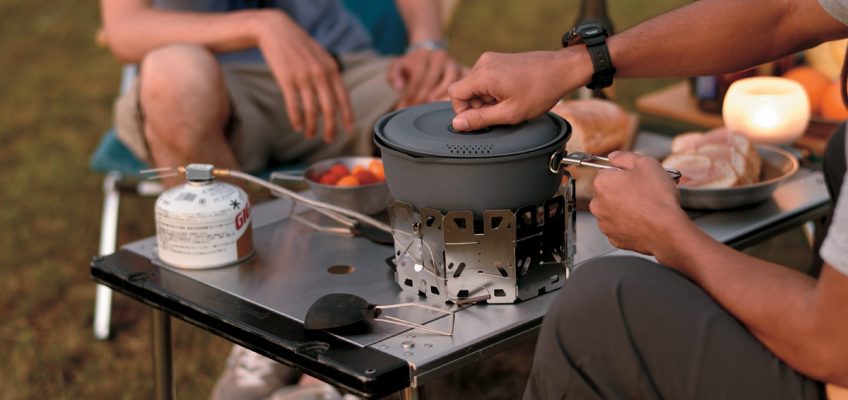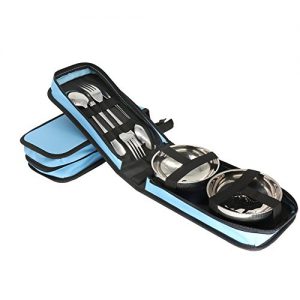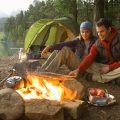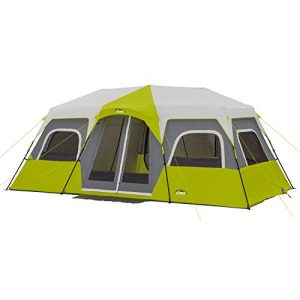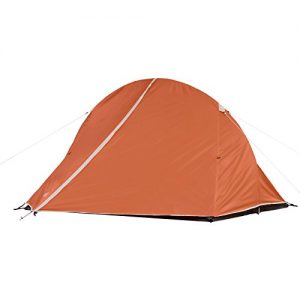Camping Equipment – Camping Stoves & Utensils
By Steel Johns
Does any of these sound like you?
- Preparing for camping season?
- Want a guide on buying camping equipment?
- Wondering what to look for in a camping stove?
- Don’t know what food to take camping?
- Don’t know how much food you’ll need camping?
- Need some pointers on camp cooking?
- Tired of boring camp meals?
- Ready to learn better cooking techniques for camping and backpacking?
Great! We can help.
CAMPING STOVES
Camp cooking does not have to be difficult or boring. The secret to simple camp cooking is to use a stove instead of a campfire. Camp stoves are better because of:
- lower environmental impact,
- less likely to start a bush fire,
- easier to control,
- faster to start and stop,
- better control over the cooking heat,
- no timber needed,
- no ash or coals to deal with,
- more convenient, and
- less mess.
If you are not convinced, then okay, I get it, you’re a purist, a cave warrior, who prefers the natural flavor of char in their food. And as for charcoal in your food, check out what Britian’s Food Standards Agency have to say about burnt toast – better for your health to bury that charred food than eat it.
For sure campfires are what really make camping special, but they are not great for cooking tasty, juicy, flavorsome, wholesome food. So, by all means have a campfire, see who can light it with two sticks or a flint, but always bring a gas camp stove for cooking. You’ll thank me.
WARNING !! Many places have times where campfires are totally banned. Often gas-powered camp stoves can be used even when open fires are not permitted. And sometimes no “uncontrolled or naked flame is permitted”. Check with your local emergency services or fire brigade.
Always check with local land agencies prior to leaving for your trip. No campfires are enjoyable and I am not saying you shouldn’t have one, just evaluate your location and know how to make a well controlled fire.
TYPES OF STOVES
There are a number of different types of camp stoves available, including:
- canister stoves,
- liquid fuel stoves, and
- family camping stoves.
Canister stoves
No mystery here, they use canisters filled with propane, butane, or a mixture of butane and propane.
These stoves can be lit with a match, a butane lighter or you can buy an automatic igniter that can be attached to the stove. Then to get a roaring flame just turn the gas on, press the igniter button, and you’ve done.
Pros:
- small and light weight,
- ideal choice for backpackers,
- very easy to use – just connect the canister to the stove, turn the gas on, and light it,
- no priming needed, and
- require very little maintenance.
You can crush the empty canisters to save space, so you can take them home for recycling.
Cons:
- need to replace the gas canisters – although, thankfully, some models have refillable canisters,
- need to carry them home to recycle them – because we do not pollute our environment (do we), and
- not suited to extreme cold conditions – use liquid fuel stoves instead (see below).
WARNING !! Be sure to read the instructions, as I once damaged a canister stove by not raising the gas burning from its stowed position to its raised position. The result was burnt paint all around the edge of the stove, oops, sorry.
Liquid Fuel stoves (shown at the top of the page)
As the name suggests use liquid fuel instead of gas. They are usually kept separate from the stove and are connected via a flexible hose.
Pros:
- ideal for extreme cold conditions,
- can use a variety of liquid fuel including white gas, gasoline, kerosene and diesel,
- less waste than gas stoves,
- work well in all weather conditions, and
- more cost effective than gas stoves, since they use 25% less fuel for the same amount of heat output.
Cons:
- heavier,
- bulkier,
- require priming,
- require pumping, and
- more expensive than gas stoves.
A camp stove that can use both gas and liquid is a wise choice. Gas stoves tend to be lighter and need less space and are easier to use – provided you can get gas canisters easily.
Family camping stoves
These are ideal for vehicle-based camping where weight and space are not an issue, but preparing an excellent meal for the ravenous hordes of people is essential.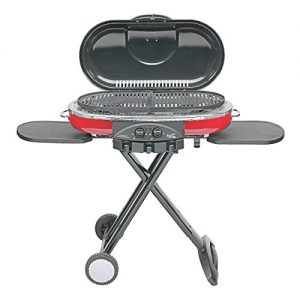
Pros:
- ideal for high quality cooking,
- produce lots of heat,
- large cooking area with two or three burners for multiple cooking pots,
- more cooking options, and
- excellent flame control.
Cons:
- large,
- heavy,
- not suitable for backpackers, and
- costly.
WARNING !! With a family camping stove people are going to expect the same quality of cooking that they get at home. So be prepared.
CAMPING UTENSILS
Of course, your camp cooking will need some pots and pans and other utensils. To help you through the maze of choices in cookware please consider the following.
Cooking utensils
You will need some cookware, including:
- cooking pot – also for boiling water,
- frying pan,
- cutting board, and
- tongs, knives, spatula and serving spoons.
You will need food, and condiments too.
Steel vs Aluminum vs Titanium vs Cast Iron
Probably the most used materials for cookware among campers and backpackers is stainless steel and aluminum. Stainless steel is extremely durable, fairly lightweight, fairly cheap, and conducts heat well. Aluminum is quite a bit lighter, conducts heat very well, but it isn’t as strong as stainless steel. That is until recently. You can now get hard anodized aluminum that is almost as durable as stainless steel, yet lighter, conducts heat better, and is easier to clean. Anodized aluminum is, however, more expensive, so if it is outside your budget then opt for stainless steel. Of course, the old-fashioned plain aluminum cookware is toxic, which is why we now use hard anodized aluminum.
Titanium is about 3 times the prices of stainless steel and about 40% the weight and stronger than aluminum. Titanium is durable and conducts heat well.
However, cast iron is the best for camp ovens, ideal for placing in and on a campfire (huh, didn’t I just convince you not to cook on campfires). This is the heaviest cookware by far, but surprisingly cost effective.
If weight is not an issue then stainless steel is acceptable for most cooking and is most durable, non-stick aluminum is easiest to clean, titanium is lightest and most expensive, and cast iron for campfire cooking (there I said it again, you can cook on a campfire).
How many utensils
The amount of utensils needs to match the number of people you are cooking for and what type of meals you’ll be preparing? A camp of 3 or 4 people needs a 5 or 6 piece Cook Set. For larger groups of people you will need a bigger cooking set and also perhaps a larger stove.
There are also specialized camping cook sets for camping and hiking. Most well-designed cookware has multiple uses, for example, pot lids can be used as fry pans. This is especially trye of stainless steel fry pan lids, except that foods tend to stick it and burn if you are not very careful. Anodized aluminum fry pan lids work much better and are very easy to clean.
Some cook sets do not have built in handles, in which case you’ll need pot grabbers. These are a tool that allows you to grab the side of the pot without burning your hand. Bring an extra grabber, because they are easily misplaced.
Cast iron “dutch” ovens are simply wonderful for campfire cooking – for slow cooking food and even baking bread.
Eating utensils
You will need something to eat with, including:
These are all available in various choices of materials including wood, cardboard, plastic, stainless steel, hard anodized aluminum and titanium – depending upon your need, the type of camping you’re engaged in and your budget. A polycarbonate material called Lexan is quite good for eating utensils. My favorite is stainless steel for its durability and plain simplicity. If I was on a big budget or needed to minimize weight I would opt for titanium.
For family vehicle camping, you will likely take a whole set of cutlery and tableware because you have room. But for backpacking you’ll be content with just a knife and a spoon. There are some hybrid eating utensils including the “spork”, which is a cross between a fork and a spoon, and another called a “splayd” which is a cross between a fork, a spoon and a knife – which could be of interest to the space conscious traveler.
Multi-tools are a boon for camping and come in many varieties and budgets.
Now you are well prepared to complete you planning, organize the most appropriate cookware, stove, pots, fry pans, and utensils to get the most out of you camping experience.

